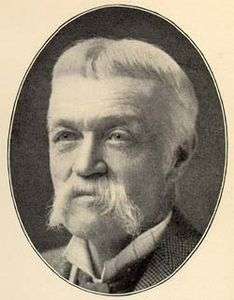Gravers station
Gravers station (formerly Graver's Lane station) is a SEPTA Regional Rail station at 300 East Gravers Lane at Anderson Street, Philadelphia, Pennsylvania. The station building is on the Philadelphia Register of Historic Places[2] and the National Register. It was built in 1872 or 1879 with Furness & Evans as the architect, according to the Philadelphia Architects and Buildings project. On November 7, 1977, it was listed on the National Register of Historic Places, and in 1983 it was acquired by SEPTA's regional rail division.
| Location | 300 East Gravers Lane at Anderson Street Philadelphia, PA | ||||||||||
|---|---|---|---|---|---|---|---|---|---|---|---|
| Owned by | SEPTA | ||||||||||
| Platforms | 2 side platforms | ||||||||||
| Tracks | 2 | ||||||||||
| Connections | |||||||||||
| Construction | |||||||||||
| Parking | 17 | ||||||||||
| Disabled access | Yes | ||||||||||
| Other information | |||||||||||
| Fare zone | 2 | ||||||||||
| History | |||||||||||
| Opened | 1879 | ||||||||||
| Services | |||||||||||
| |||||||||||
Graver's Lane Station | |||||||||||
   | |||||||||||
| Location | Gravers Lane and Reading Railroad Line Philadelphia, Pennsylvania | ||||||||||
| Coordinates | 40°4′37.75″N 75°12′8.73″W | ||||||||||
| Built | 1879 | ||||||||||
| Architect | Frank Furness | ||||||||||
| Architectural style | Late Gothic Revival | ||||||||||
| NRHP reference No. | 77001184 | ||||||||||
| Added to NRHP | November 07, 1977[1] | ||||||||||
The building combines a commuter railroad station with a residence on the second floor. It combines many materials and stylistic features, leading one architectural historian to call the style "histrionic".[3]
The station is in zone 2 on the Chestnut Hill East Line, on former Reading Railroad tracks, and is 10.3 track miles from Suburban Station. In 2013, this station saw 124 boardings and 125 alightings on an average weekday.[4]
Station layout
| G | Street level | Exit/entrance |
| P Platform level |
Side platform, doors will open on the right | |
| Inbound | ← Chestnut Hill East Line toward 30th Street (Wyndmoor) | |
| Outbound | Chestnut Hill East Line toward Chestnut Hill East (Terminus) → | |
| Side platform, doors will open on the right | ||
References
- "National Register Information System". National Register of Historic Places. National Park Service. January 23, 2007.
- "PRHP: List of properties with OPA-compliant addresses" (PDF). Philadelphia Historical Commission. Retrieved 03-07-2013. Check date values in:
|accessdate=(help) - Cohen, Madeline L. (1977). "Graver's Lane Station, Reading Railroad" (PDF). National Register of Historic Place Nomination Form. Pennsylvania Historical and Museum Commission. Retrieved January 2, 2014.
- "SEPTA (May 2014). Fiscal Year 2015 Annual Service Plan. p. 62" (PDF). Archived from the original (PDF) on 2014-08-12. (539 KB)
External links
- SEPTA – Gravers Station
- 2000 Kevin Leary photo
- Gravers Lane entrance from Google Maps Street View
- Station House from Google Maps Street View


